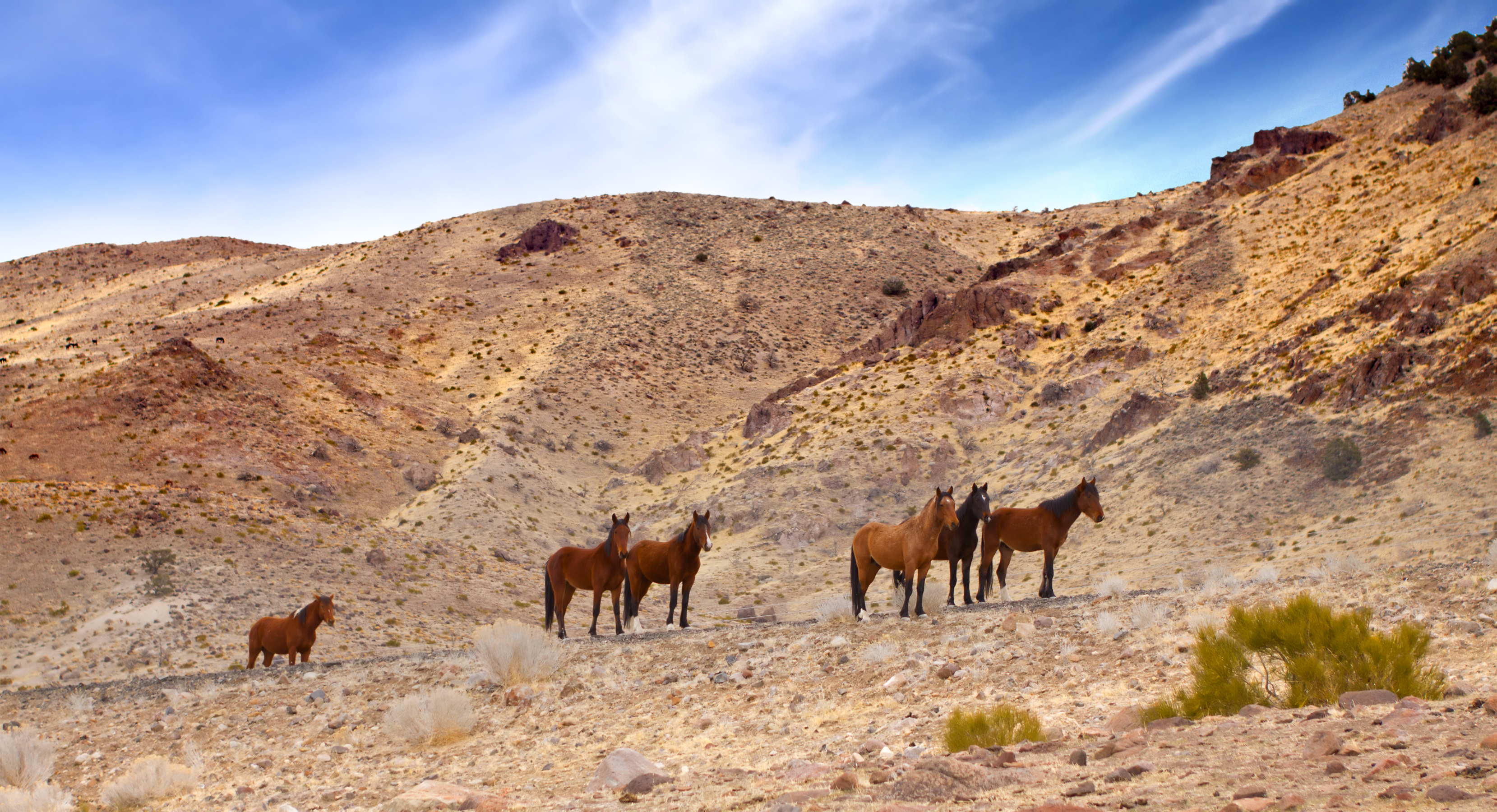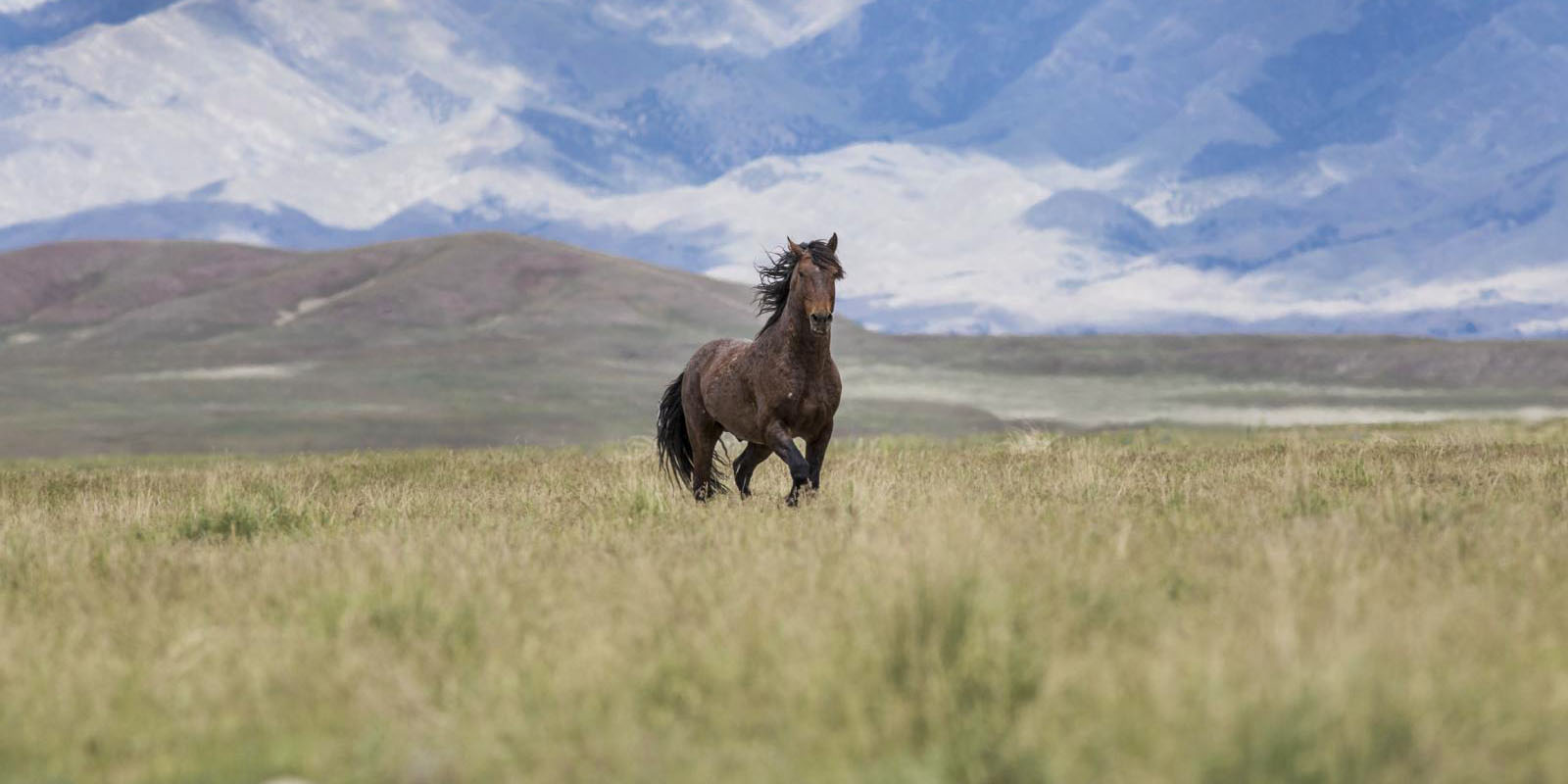Our blog series, Herds Across the West, examines wild horses and burros by herd, Herd Management Area (HMA) and state to provide a deeper understanding as we report on roundups and actions affecting each region.
Nevada Wild Horse Range
Nevada is home to the majority of America's wild horses. The state arguably has the most wild horse and burro history as well. In the last herd spotlight about Nevada’s Stone Cabin wild horses, we told you about the first Congressionally approved wild horse and burro roundup. This week, we’re bringing you history from the first wild horse area created in the United States -- the Nevada Wild Horse Range (NWHR).
Where to Find Them
This historic herd management area (HMA) was established in 1962 through a cooperative agreement between Nellis Air Force Base and the Bureau of Land Management (BLM) in Nevada. The HMA was created due to public pressure by thousands of wild horse lovers across the nation.
The NWHR lies completely within the Nellis Range Complex, an Air Force weapons testing and flight training center, where public access is restricted. The wild horses there live on 1.3 million acres of military land, primarily residing in the north-central part of the military complex, which spans three Nevada counties, Clark, Lincoln and Nye. As an official wild horse “range,” the land is designated “principally” for wild horses, but the Nevada BLM states that wild horse use is secondary to military use on this land. There is no cattle grazing in this HMA. The Appropriate Management Level (AML) for these horses is 300-500. The BLM estimates that approximately 800 wild horses live in the NWHR today.
The horses here survive in the Mojave Desert ecosystem, in an environment where water is scarce. In the harsh summers, the horses sometimes travel up to 15 miles per day for food and water, drinking every day. In the cooler winter and spring months, the horses can go two days between visits to their water source. The horses’ ability to adapt to the scorching summers and freezing winters of their habitat is remarkable. They live amongst yellow flowering rabbitbrush and striking green saltbush. The surrounding mountains grow juniper trees, and pinyon pines, and the ground is scattered with sweet-smelling sagebrush. The NWHR horses coexist peacefully with the surrounding wildlife, including mountain lions, mule deer, starlings, quail, the rare prairie falcon and so many more.
There are also a few burros who have wandered into this HMA, but they are not officially authorized to live on the land.
Over the past several decades, the Nevada Wild Horse Range wild horses have faced many hardships at the hands of humans, mysterious deaths to roundups.
The History
In 2007, 71 wild horses died of nitrate poisoning on the Tonopah Test Range, a test site on the edge of the Nellis Range. Water samples taken from the area where the horses were drinking from showed a nitrate level 66 times the safe drinking water standards for humans and 33 times the safe drinking standards for livestock. At the time, one former worker at the Tonopah Test Range alleged that he knew exactly how the nitrates got into the water sources -- illegal dumping of de-icing fluid from a nearby runway. He claims that allowing nitrate runoff to run into the desert was common practice when he worked at the base from 1990 to 1998. While his story about the source of the nitrites was never confirmed, the BLM did confirm the cause of death to be nitrate poisoning.
Roundup Status
In 2018, the BLM conducted an emergency roundup of the Nevada Wild Horse Range horses using bait traps rather than helicopters. The reason cited for the roundup was lack of water and resources in the wild horse’s habitat. The capture operation concluded with over 800 wild horses losing their freedom and with 31 losing their lives.
The mustangs of the Nevada Wild Horse Range are true symbols of the strength, resilience and beauty of the American West, but they may not be for long. The BLM has released a destructive, 10-year plan for these magnificent, free-roaming wild horses that would shatter life as they know it.
Under this proposed plan, the BLM would remove all horses deemed “excess” horses and manage them at low AML (300-400 horses), and remove all burros in this area. Another reckless aspect of the BLM’s 10-year plan is the use of untested IUDs in the mares, the gelding of stallions, and managing the horses at a skewed sex ratio of 60% stallions and 40% mares. This 10-year plan is just one more step in the BLM’s march toward the destruction of America’s wild free-roaming horses and burro populations.
Speak up and speak out now.


